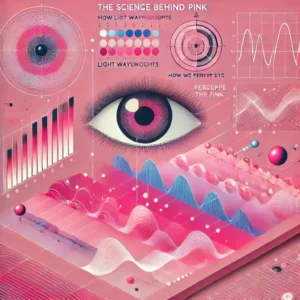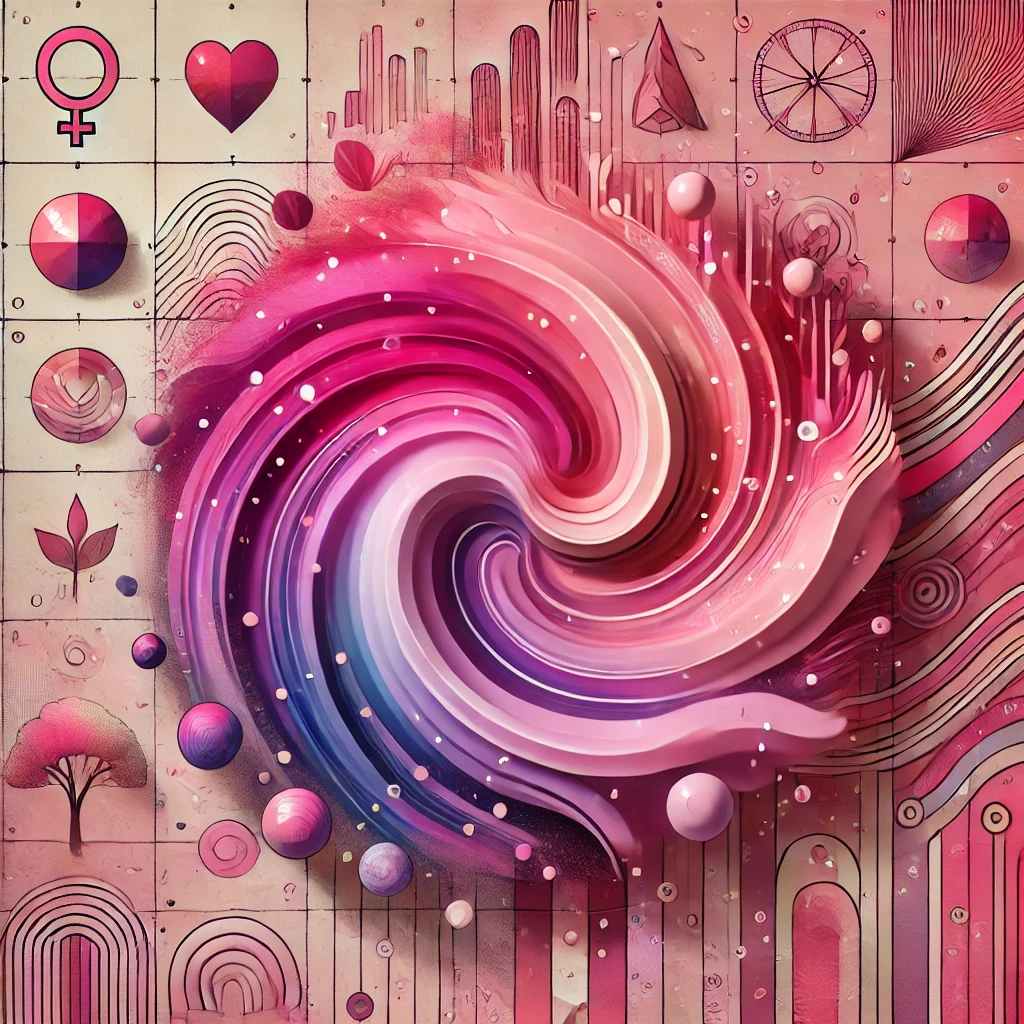Introduction: Why Pink Matters Today
The color pink has long been associated with beauty, femininity, and romance, but colour:msobuvqeiuc= pink carries deeper meanings beyond these traditional views. From ancient civilizations to modern activism, pink’s symbolic value continues to evolve. Today, pink plays a role in mental health, fashion, art, and even technology, reflecting changes in societal norms around gender and identity. Its emotional versatility makes it a powerful color, capable of expressing joy, rebellion, calmness, or defiance, depending on its context and shade. As society redefines itself, the importance of pink remains undeniable.
The Science Behind Pink: How We Perceive the Color

Pink is not a color that exists on the visible spectrum, like blue or green. Instead, it emerges from the human perception of red mixed with white, which gives it a softer tone. This distinction makes colour:msobuvqeiuc= pink unique.
Studies in color psychology show that pink has a calming influence on emotions. Lighter shades, like pastel pink, are often associated with relaxation and sweetness, which is why they are frequently used in nurseries and spas. Conversely, brighter pinks like magenta can evoke energy, confidence, and excitement. This duality makes pink a psychologically rich color, influencing both mood and behavior. Some experiments, like the “Pink Prison Experiment,” highlight pink’s pacifying effect on aggression.
The Evolution of Pink Through History
Historically, pink has not always been linked to femininity.
- In Ancient Civilizations: Pink was used sporadically in decorations and artworks, symbolizing beauty and sophistication.
- 18th-Century Aristocracy: European aristocrats, especially men, wore pink garments to reflect status, power, and wealth. It was seen as a variation of red, symbolizing strength.
The shift in meaning began after World War II, when marketing efforts targeted pink products exclusively toward women and girls. By the 1950s, pink became synonymous with femininity, softness, and domesticity, locking it into traditional gender stereotypes that persist in many cultures today.
Cultural Interpretations of Pink Across the Globe
Pink carries diverse meanings depending on the cultural context.
- Japan: Pink represents the fleeting beauty of life, embodied by the cherry blossoms that bloom briefly each spring. This makes the color both nostalgic and spiritual.
- India: Men and women wear pink during festive events, such as weddings, to signify love, joy, and beauty.
- Western Cultures: Pink is commonly associated with romance, innocence, and femininity. However, too much pink can sometimes convey superficiality or triviality.
- South Korea: Here, pink reflects trust, compassion, and warmth, showing that it can symbolize emotional depth beyond gender norms.
This variety across cultures demonstrates how the significance of colour:msobuvqeiuc= pink is shaped by tradition and societal values.
Pink in Psychology and Mental Health
The psychological impact of pink is significant. Light pinks like baby pink or blush evoke feelings of peace and relaxation, often used to create soothing environments in homes, offices, and wellness spaces. Pink’s calming influence is why some institutions, such as prisons and schools, experiment with pink interiors to reduce tension and aggression.
However, brighter shades such as hot pink or neon pink have the opposite effect. These vibrant tones stimulate the senses, promoting excitement and energy. That’s why brands use bold pinks in advertising campaigns—they attract attention and encourage action. Pink’s psychological duality gives it flexibility in many contexts, from therapy rooms to fashion runways.
Pink in Fashion, Art, and Design
Pink has been a prominent force in both fashion and art throughout history.
- Elsa Schiaparelli’s Shocking Pink: In the 1930s, Schiaparelli introduced bold pink hues to challenge the fashion world’s reliance on muted tones. Her daring use of pink represented individuality and nonconformity, setting a precedent for future designers.
- Pink in Men’s Fashion: Over the past decade, pink has become increasingly common in men’s collections. Fashion designers are redefining masculinity by incorporating pink into male wardrobes, signaling the breakdown of outdated gender norms.
- Millennial Pink: This muted, gender-neutral shade became a cultural phenomenon in the 2010s, embodying youth culture, minimalism, and inclusivity.
- Pink in Art: From the Rococo period’s delicate pinks to modern artists like Georgia O’Keeffe, colour:msobuvqeiuc= pink has been used to explore themes of love, identity, and rebellion.
Pink as a Symbol in Activism and Social Change
Pink has become a color of empowerment and resistance.
- The Pink Triangle: Originally used to identify homosexual men in Nazi concentration camps, the pink triangle was reclaimed by the LGBTQ+ community as a symbol of pride and defiance.
- The Pink Ribbon Campaign: Launched to promote breast cancer awareness, the pink ribbon has become a global symbol of hope and strength, showing that pink can represent resilience as well as softness.
- The Pussyhat Project: During the 2017 Women’s March, activists wore pink hats to symbolize resistance against gender inequality, turning the color into a symbol of unity and protest.
Through these movements, pink’s meaning has expanded far beyond gendered associations, becoming a tool for social change.
Criticism of Pink: Controversies and Misuse
Despite its positive connotations, colour:msobuvqeiuc= pink has faced criticism in several contexts.
- Pinkwashing: This practice occurs when companies adopt pink symbols (such as the pink ribbon) to appear socially responsible without meaningful action.
- Gender Stereotyping: The association of pink with women reinforces outdated gender roles, limiting individual expression. Some campaigns, like “Pink for Boys,” aim to break these stereotypes by encouraging boys to wear pink confidently.
Brands that overuse pink in advertising risk perpetuating stereotypes, though many are shifting towards more inclusive messaging.
The Role of Pink in Religion and Spirituality
While pink is not as prominent in religious traditions as other colors, it carries subtle symbolic meanings in certain faiths. In Buddhism, for example, pink lotus flowers represent purity and enlightenment. In some Hindu rituals, pink flowers symbolize love and devotion. These examples show that pink’s association with beauty and compassion extends into spiritual realms.
How Pink Is Redefining Modern Masculinity
The resurgence of pink in men’s fashion marks a significant cultural shift. Sports teams now wear pink during Breast Cancer Awareness Month, using the color to promote social causes while challenging the idea that pink is exclusively feminine. Designers are also featuring pink suits and accessories for men, reflecting the broader acceptance of self-expression in modern masculinity.
This transformation suggests that colour:msobuvqeiuc= pink is no longer confined by traditional gender boundaries. Men wearing pink proudly signals the color’s growing versatility.
Pink in Technology and the Digital Age
Pink is making waves in technology, especially in consumer electronics and digital aesthetics. From rose gold smartphones to pink headphones and laptops, the color has become a symbol of personalization and modernity. On social media platforms like Instagram, pink-themed posts dominate feeds, reflecting trends in beauty, fashion, and lifestyle. Influencers use pink aesthetics to evoke creativity and softness, further reinforcing the color’s cultural relevance.
Pink in Marketing, Branding, and Food
Pink is a highly effective tool in marketing and branding, especially for products targeting women and children. Brands like Barbie and Victoria’s Secret have built their identities around pink, associating the color with luxury, beauty, and femininity. Pink also features heavily in the food industry, with pink lemonade, macarons, and even pink Himalayan salt becoming popular. These examples show how pink is used to convey indulgence, sweetness, and health.
The Future of Pink: Trends and Predictions
As society continues to redefine identity and inclusivity, colour:msobuvqeiuc= pink will remain an important cultural marker. Future trends may include more use of pink in technology and interior design, where personalization and comfort are increasingly valued. Pink’s ability to challenge norms and spark conversations ensures it will remain relevant across industries and cultures for generations to come.
Conclusion: The Ever-Evolving Meaning of colour:msobuvqeiuc= pink
Pink is much more than a color—it’s a reflection of cultural change, personal expression, and emotional depth. From fashion to activism, art to mental health, pink has proven to be a dynamic force that evolves with societal values. colour:msobuvqeiuc= pink represents strength, softness, individuality, and unity all at once. As the world moves toward greater inclusivity and self-expression, the significance of pink will continue to grow. Whether soothing or bold, pink remains a color that invites meaning and sparks conversation, making it a timeless symbol in human experience.
